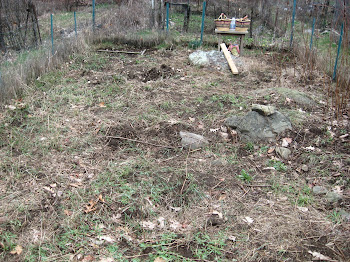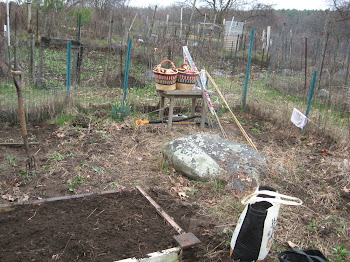Ah-ha!
As recommended by a friend: we were talking about growing Asian varieties of vegetables, and I hadn't found any yet in my local Asian grocery markets, so she referred me to Kitazawa Seed company - looks good so far, and I've ordered a catalog. Hooray! Now, if I could just find someplace that offers that variety of spinach (?) that I used to eat in China, it was called 空心菜 "kong xin cai" or "hollow hearted vegetable" - it resembled spinach, but was long and tendrilly like pea shoots (also yummy in season) and I had it with garlic all the time.
I had found a few places that sold seeds, but they are in Canada, and bear the warning that apparently this member of the Convolvulus family (!), Ipomoea aquatica, although I know it's edible!, is considered a noxious, invasive species, and apparently is generally banned from importation without a license from the USDA. I know I've seen it at the Asian grocery markets, so I wondered what was going on.
Then I met another of my community garden neighbors, and she is in fact growing a bunch of asian varieties of veggies (yay!), as well as originally hailing from China herself. So, she explained that kongxincai is really difficult to grow from a seed anyway, and that I should do as she's doing, and grow it from a cutting, having first - not unlike bamboo - cultivated its roots in some water first. Also, it will need a lot of water (it prefers very wet soil - after all, it is 'water spinach'). So, clearly this is going to be a little while before I can grow it...plus I haven't seen any at the market recently. Patience, patience...
Oh well. For the moment I'll have to settle for making 土豆丝 tudousi - peppery julienned potatoes - with my new slicer gadget from Kotobukiya market.
Subscribe to:
Post Comments (Atom)














3 comments:
In the Philippines we call it "kangkong". That's right, one letter away from being "kingkong". But anyway, there are several varieties. That one is called "swamp cabbage" sometimes.
The variety with narrower leaves (like the one in the picture) is commonly called "Chinese kangkong" here. Those can grow in dry wastelands. I have some growing among the grass here, under the hot hot sun. I don't even know how they made it there.
There are broader-leafed ones that sort of resemble miniature taro leaves. These, in the Philippines, are the ones that love the water more.
It is true, you can grow either variety from cuttings. Once you have snapped off the leaves for use in cooking, just let the stems rest in water for a day or two, then roots will come out, as will tiny new shoots.
Another great way to make use of even the tougher hollow stems is to chop them like small leeks and simmer in coconut milk with onion. :D
Bea, thank you for the advice and the information! That's *great*! I'm looking forward to trying your recipe as well. I didn't know there were a couple sub-varieties as well, that is so cool!
I love Kitazawa Seed Co- they are where I got my Asian mustards. Next season, I'm ordering a lot more seeds from them. I'm going to try the Asian mustards in my coldframe this fall, too, to see how they overwinter. It should work well- mustards are tough little puppies.
Post a Comment